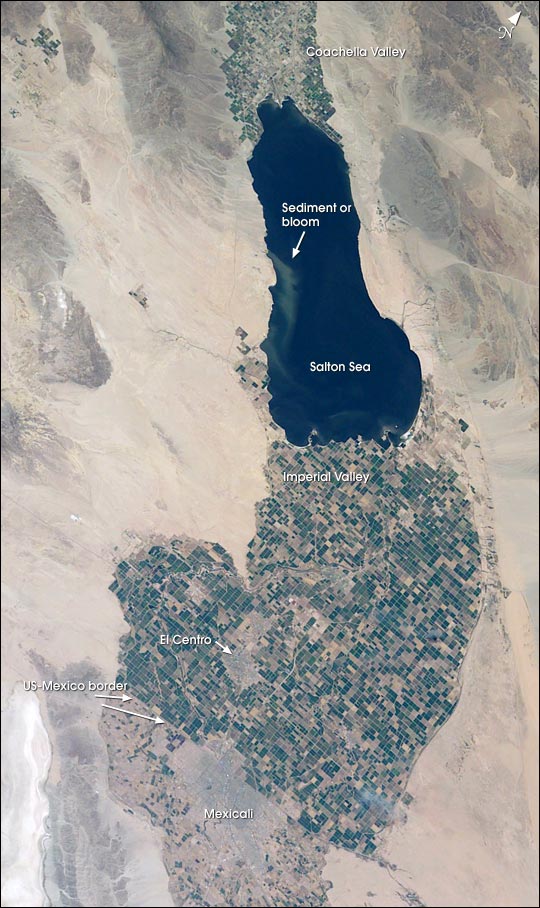


Southern California’s Salton Sea is a prominent visual for astronauts. This large lake supports the rich agricultural fields of the Imperial, Coachella and Mexicali Valleys in the California and Mexico desert. The Salton Sea formed by accident in 1905 when an irrigation canal ruptured, allowing the Colorado River to flood the Salton Basin. Today the Sea performs an important function as the sink for agricultural runoff; water levels are maintained by the runoff from the surrounding agricultural valleys. The Salton Sea salinity is high—nearly 1/4 saltier than ocean water—but it remains an important stopover point for migratory water birds, including several endangered species.
The region also experiences several environmental problems. The recent increased demands for the limited Colorado River water threatens the amount of water allowed to flow into the Salton Sea. Increased salinity and decreased water levels could trigger several regional environmental crises.
The agricultural flow into the Sea includes nutrients and agricultural by-products, increasing the productivity and likelihood of algae blooms. This image shows either a bloom, or suspended sediment (usually highly organic) in the water that has been stirred up by winds.
Astronaut photograph STS111-E-5224 was taken by the STS-111 Space Shuttle crew that recently returned from the International Space Station. The image was taken June 12, 2002 using a digital camera. The image was provided by the Earth Sciences and Image Analysis Laboratory at Johnson Space Center. Additional images taken by astronauts and cosmonauts can be viewed at the NASA-JSC Gateway to Astronaut Photography of Earth.